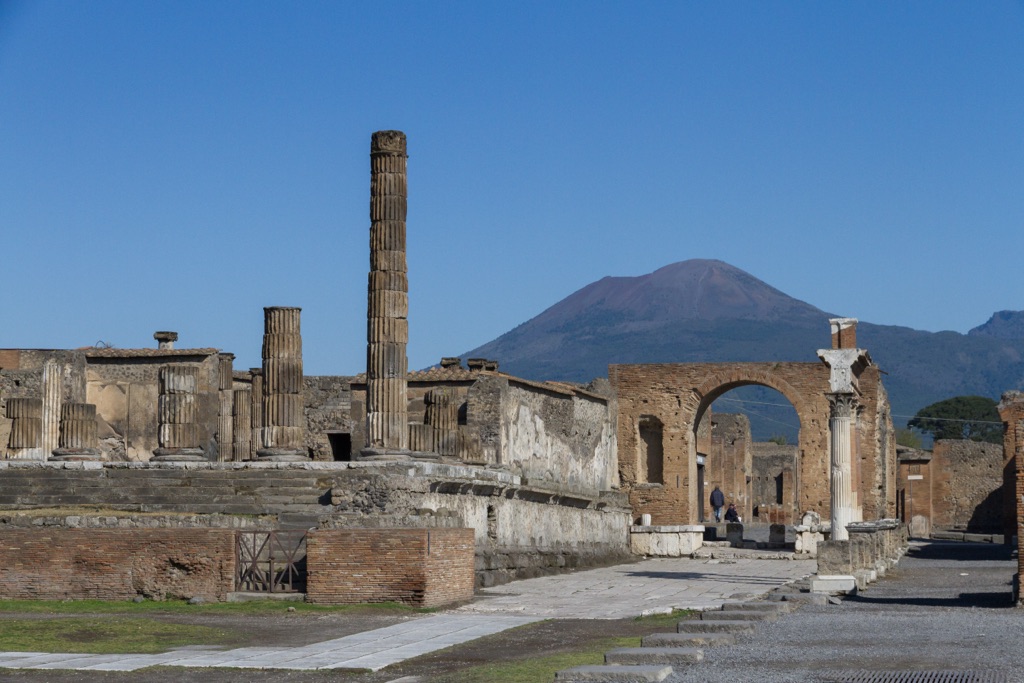Pompeii, once a bustling Roman city, is now a significant archaeological site near Naples, Italy. It’s renowned for its tragic end, buried under volcanic ash and pumice after the catastrophic eruption of Mount Vesuvius in 79 AD. The site provides an unparalleled window into ancient life, frozen in time. Excavations have revealed well-preserved buildings, artifacts, and even the casts of victims, offering insights into Roman culture, economy, and daily routines. Pompeii’s discovery in the 16th century has since captivated historians, archaeologists, and tourists alike, making it an invaluable resource for understanding the ancient world.
Get your dose of History via Email
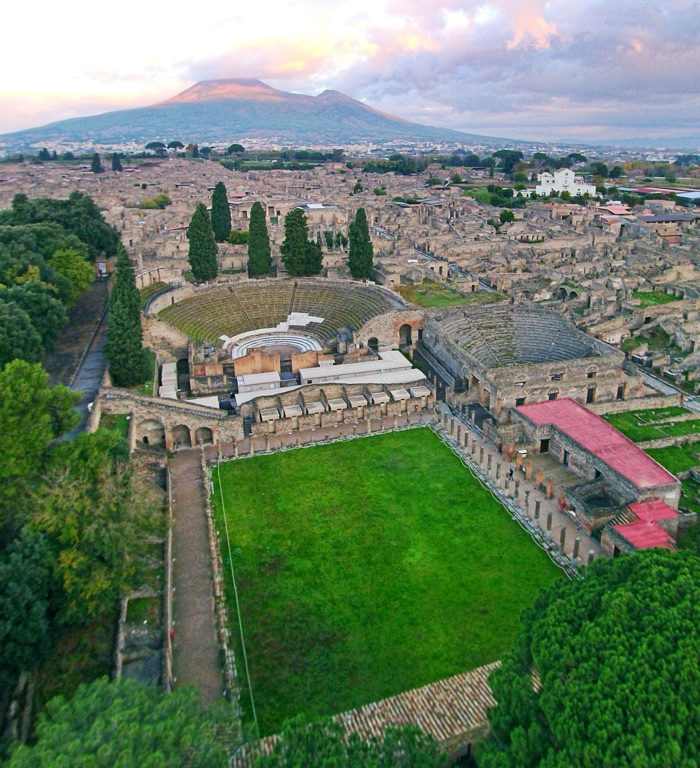
Historical Background of Pompeii
Rediscovered in 1599, Pompeii’s excavation began in earnest in 1748 by the Spanish military engineer Rocque Joaquin de Alcubierre. This ancient city, founded in the 7th or 6th century BC by the Osci or Oscans, flourished under Roman rule after the 1st century BC. It became a hub of commerce and a resort for Rome’s elite. The eruption of Vesuvius, which entombed the city, ironically preserved it, providing a snapshot of Roman life. Over time, various parties have excavated Pompeii, each uncovering more about its history and the people who once walked its streets.
Initially, the city was a small settlement, but it grew to become an important trading center. The Greeks had a presence here, followed by the influence of the Etruscans and Samnites. Eventually, Pompeii fell under Roman dominion, becoming a colony in 80 BC. It saw significant development, including an amphitheater, a forum, and an aqueduct. The city’s inhabitants were a mix of different cultures, which is evident in the diverse architectural styles and artifacts found.
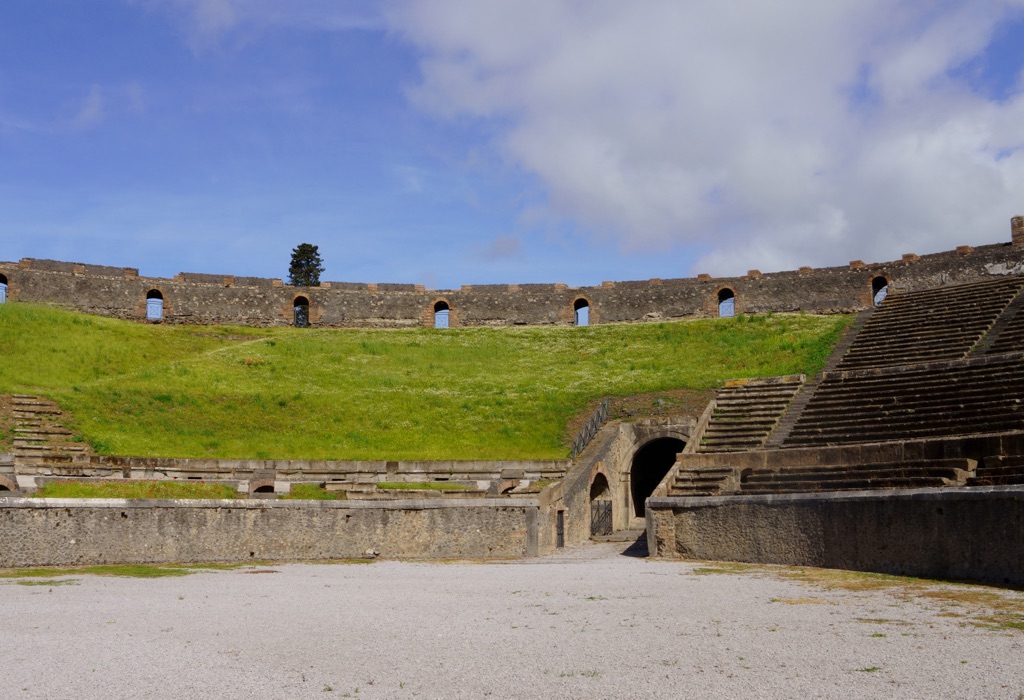
Throughout its history, Pompeii faced challenges, including previous seismic events before the catastrophic eruption. However, none were as devastating as the one in 79 AD. The eruption caught the residents by surprise, despite the tremors leading up to it. The city was lost for centuries, its location forgotten, until its rediscovery brought it back to the world’s attention.
Notably, Pompeii was not the only city affected by the eruption. Nearby Herculaneum, Oplontis, and Stabiae were also buried and preserved. Together, these sites provide a comprehensive look at the region’s life during the Roman Empire. The preservation of organic materials, such as wooden structures and food, is particularly remarkable, offering unique insights into ancient diets and building techniques.
The site has also been the scene of significant historical research and preservation efforts. Today, Pompeii is a UNESCO World Heritage Site and one of the most popular tourist attractions in Italy. Its ongoing study continues to contribute to our understanding of Roman civilization, while conservation efforts aim to protect this invaluable window into the past for future generations.
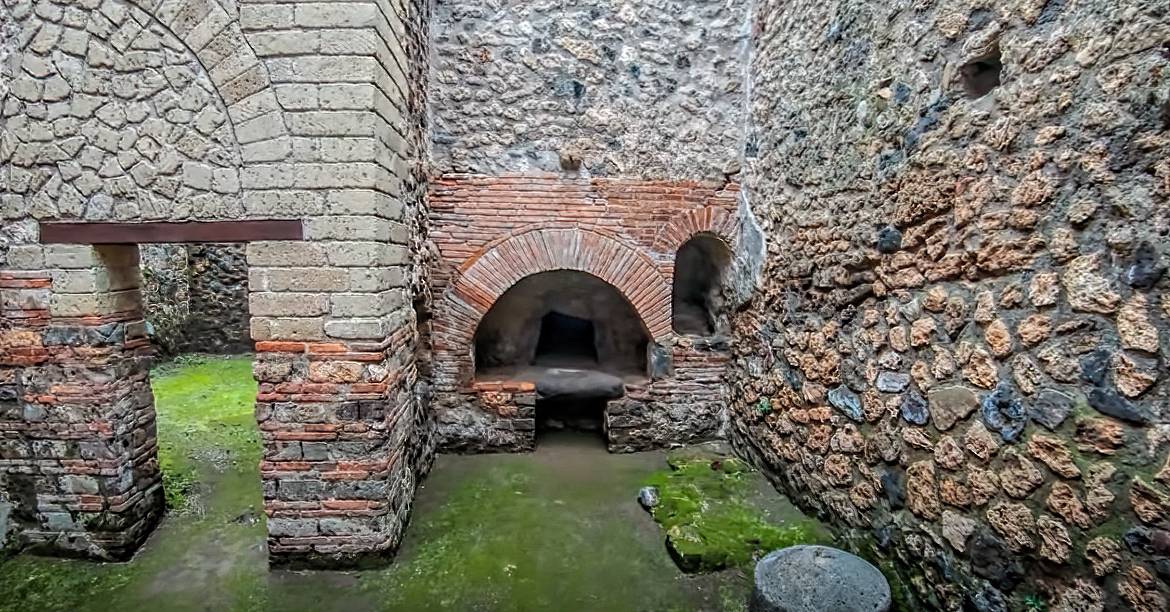
About Pompeii
Pompeii’s urban layout and architecture reflect its evolution over centuries. The city’s streets are laid out in a grid pattern, typical of Roman town planning. Houses range from modest dwellings to grand villas, like the Villa of the Mysteries, adorned with exquisite frescoes. Public buildings, such as the Forum, baths, and amphitheater, indicate a thriving social and public life. The city also had a complex water system, with aqueducts supplying public fountains and private homes.
The construction methods and materials used in Pompeii were typical of Roman engineering. Walls were built using a core of opus incertum (irregularly shaped stones) or opus reticulatum (diamond-shaped bricks), faced with plaster. Roofs were often made of tiles, while floors could be simple beaten earth or elaborate mosaics. The use of concrete allowed for the construction of durable and complex structures, such as the amphitheater.
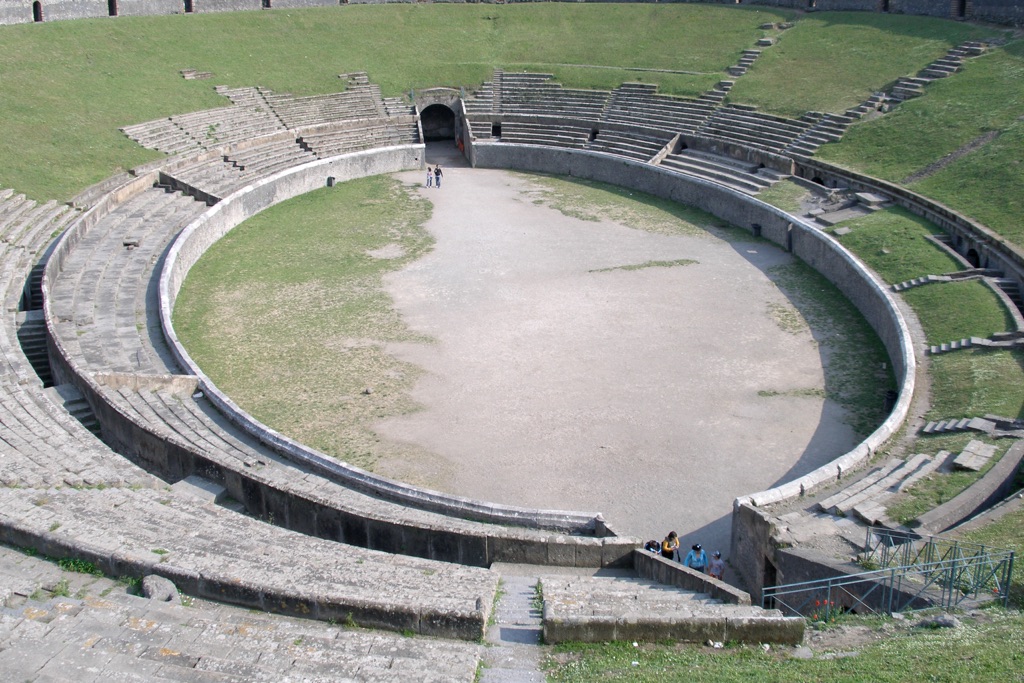
Architectural highlights include the Forum, the religious and social heart of the city, surrounded by temples and administrative buildings. The Amphitheater of Pompeii, one of the oldest surviving Roman amphitheaters, could seat around 20,000 spectators. The luxurious houses, like the House of the Faun, showcase intricate mosaics and frescoes, providing insight into the wealth and tastes of Pompeii’s inhabitants.
Many buildings in Pompeii exhibit a mix of Greek and Roman architectural elements, reflecting the city’s diverse cultural influences. For example, the large number of preserved frescoes display a variety of styles, from the Hellenistic to the more Roman-focused Third and Fourth styles. These artworks not only decorate the city but also serve as historical documents, depicting myths, landscapes, and everyday activities.
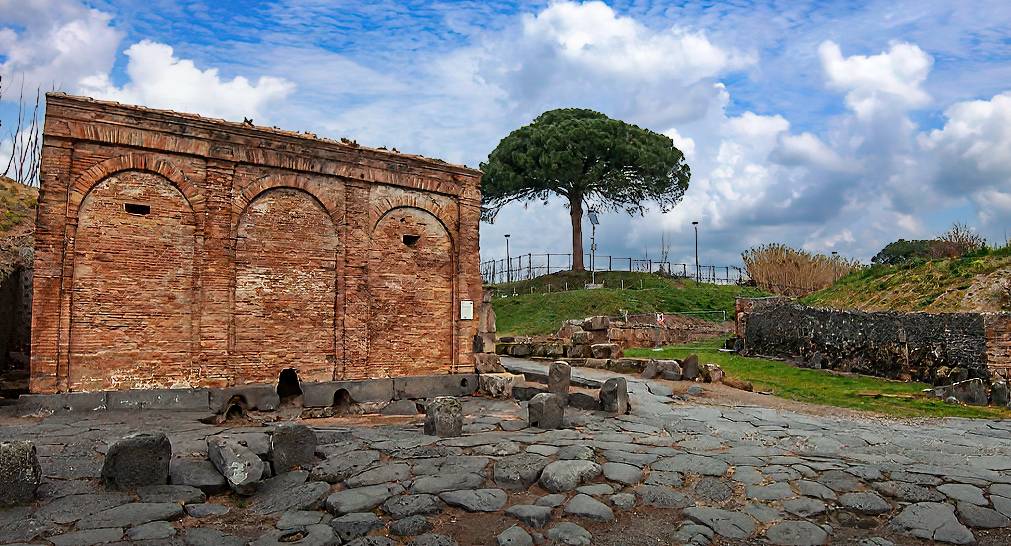
Preservation of Pompeii’s architecture and artifacts has been an ongoing challenge. Exposure to the elements and tourism has led to deterioration over time. Restoration and conservation projects are crucial in maintaining the integrity of the site. These efforts ensure that Pompeii continues to provide valuable information about Roman building practices and urban design.
Theories and Interpretations
Over the years, Pompeii has been a hotbed of scholarly debate and interpretation. Theories about the city’s destruction, the behavior of its inhabitants during the disaster, and the interpretation of its art and architecture have evolved with new discoveries. Some researchers have suggested that the date of the eruption might have been later in the year than traditionally thought, based on clothing and produce found at the site.
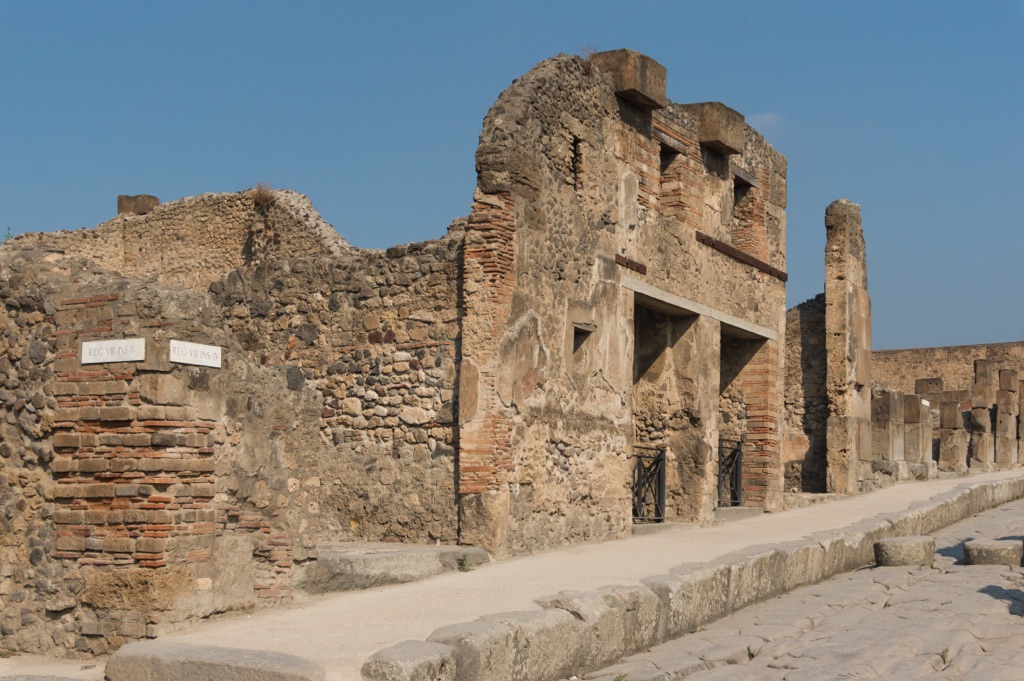
One of the most intriguing aspects of Pompeii is the presence of graffiti on its walls. These inscriptions provide a unique glimpse into the thoughts and daily lives of its citizens. They range from political endorsements to personal messages, adding a human dimension to the archaeological remains. The graffiti has been crucial in understanding the use of Latin language and the social dynamics of the city.
There are also theories about the social structure of Pompeii, inferred from the size and decoration of houses, the distribution of shops, and the types of artifacts found. Some historians argue that the city had a complex class system, with a clear distinction between the elite and the common people. This is supported by the luxurious nature of some residences compared to more modest living quarters.
The casts of victims, created by pouring plaster into voids left by decomposed bodies, have led to interpretations about the health and lifestyles of Pompeii’s inhabitants. Studies of these casts and skeletal remains suggest differences in diet and health between the wealthy and the poor. They also provide heartbreaking snapshots of the final moments of the victims’ lives.
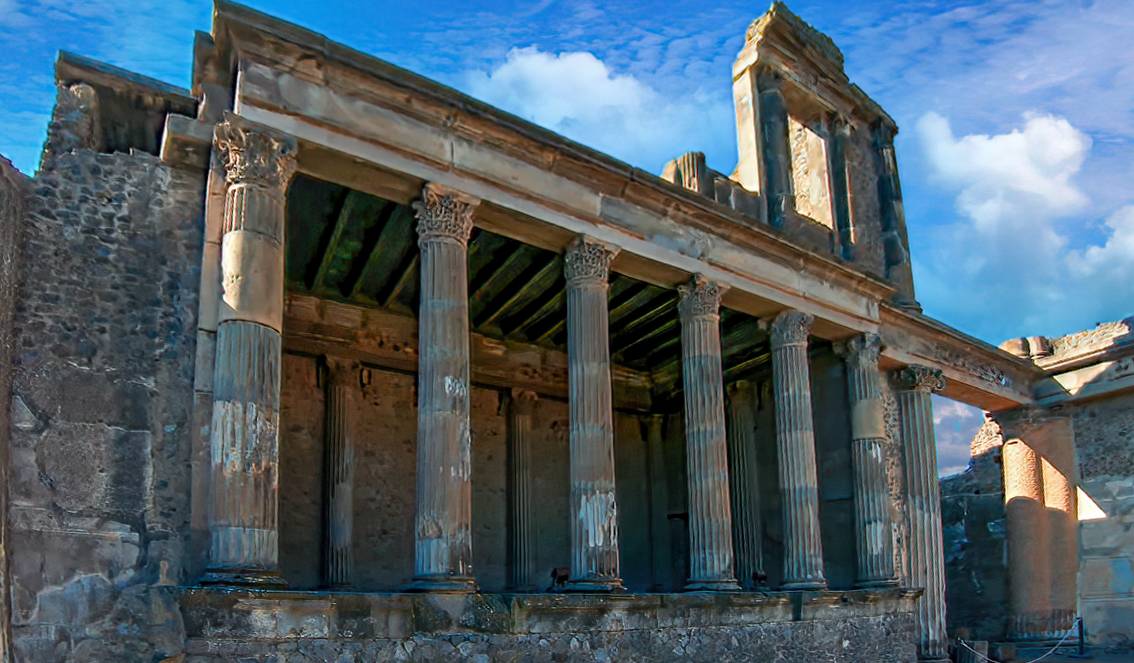
Archaeological methods, such as stratigraphy and radiocarbon dating, have been employed to understand the chronology of the city’s occupation and destruction. These techniques help to match the physical evidence with historical records, although some aspects of Pompeii’s story remain open to interpretation. The ongoing research continues to refine our understanding of this ancient city and its people.
At a glance
Country: Italy
Civilization: Roman
Age: Founded in the 7th or 6th century BC, destroyed in 79 AD
Conclusion and Sources
Reputable sources used in creating this article:
- Wikipedia – https://en.wikipedia.org/wiki/Pompeii
- Britannica – https://www.britannica.com/place/Pompeii
- World History Encyclopedia – https://www.worldhistory.org/pompeii/
- UNESCO World Heritage Centre – https://whc.unesco.org/en/list/829
- The official Pompeii Sites – http://pompeiisites.org/en/

